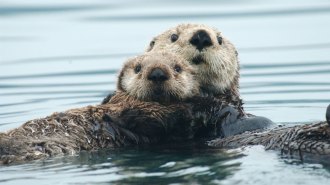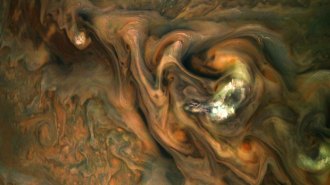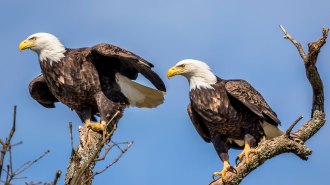Search Results
The significance of simulations
Students will discuss the purpose, benefits and challenges of using computer simulations in scientific research. Then, students will brainstorm a real-world issue that could be investigated with a computer simulation and think about how the simulation would work.
Ready to rumble
Students will answer questions about the online Science News “Greece’s Santorini volcano erupts more often when sea level drops,” which describes how a computer simulation revealed a hidden relationship between sea level and a volcano’s explosive history. A version of the story, “Sea level dips spur volcanic eruptions,” appears in the August 28, 2021 issue of Science News.
Dig into atomic models
Students will research how knowledge of the atom has changed over time, visually represent a historic atomic model and present that model to the class. Students can also explore the standard model of particle physics and discuss ways it could be depicted.

How Muscle Cells Keep Otters Warm
In this guide, students will learn about how mitochondria help the ocean’s smallest mammal generate body heat. Then, students will discuss cell structure and energy production, diagram how mitochondria function and brainstorm a research question.
Mighty mitochondria
Students will answer basic questions about cell structure and energy production, draw diagrams to visualize how mitochondria in sea otters may function differently than in other marine mammals and brainstorm a research question for further investigation.
Sea otters’ cellular surprise
Students will answer questions about the online Science News article “Sea otters stay warm thanks to leaky mitochondria in their muscles,” which explores scientists’ efforts to figure out how the ocean’s smallest mammal maintains an extreme metabolism. A version of the story, “How muscles keep otters warm,” appears in the August 14, 2021 issue of Science News.
Think like a science journalist
Students will learn how science journalists develop stories from scientific studies by analyzing a Science News article and the study on which it is based. Then, students will use a scientific study provided by the teacher to write their own news article.

Physics Helps Alien Rain Stay In Shape
In this guide, students will learn how the laws of physics shape rain on other planets and explore how molecules interact within alien raindrops.
Sizing up alien rain
Students will answer questions about the online Science News article “How the laws of physics constrain the size of alien raindrops,” which explores a new model for rain on planets across the Milky Way. A version of the story, “Physics helps alien rain stay in shape,” appears in the May 8, 2021 & May 22, 2021 issue of Science News.
Modeling molecules in alien rain
Students will compare and contrast rain on Earth with rain on other planets and practice drawing molecular structures of various rain substances to examine the substances' physical and chemical properties. Students will use that information, along with the planetary conditions needed to form rain, to create a short weather forecast for one planet.
- Exercise type:Activity
- Topic:Health & Medicine
- Category:Coronavirus
- Category:Data Analysis
- Category:Diversity in STEM
A fair shot
Students will analyze a graph to identify inequities in COVID-19 vaccine access among nations based on wealth, discuss how affluence affects access to and distribution of vaccines as well as how disparities in vaccine distribution affect global pandemic recovery. Students will then work in groups to research COVID-19 vaccine access and distribution in their state or local area, identify potential inequities in vaccine access and distribution and construct a graph of their own.

Elusive Killer in Eagle Die-Offs ID’d
In this guide, students will learn about scientists’ quest to solve mysterious bird deaths, discuss how invasive species affect ecosystems and research an invasive species in their region.